Understanding Manual Therapy: A Holistic Approach to Pain and Mobility
Manual therapy represents a hands-on approach used extensively in physiotherapy to address various musculoskeletal ailments. By employing tactile techniques such as joint mobilization, soft tissue manipulation, and therapeutic exercises, manual therapy aims to alleviate pain, improve mobility, and restore functional movement. This article delves into the conditions commonly treated by manual therapy, the strategies involved, and the benefits it offers for pain management and rehabilitation.
Defining Manual Therapy and Its Mechanisms of Action
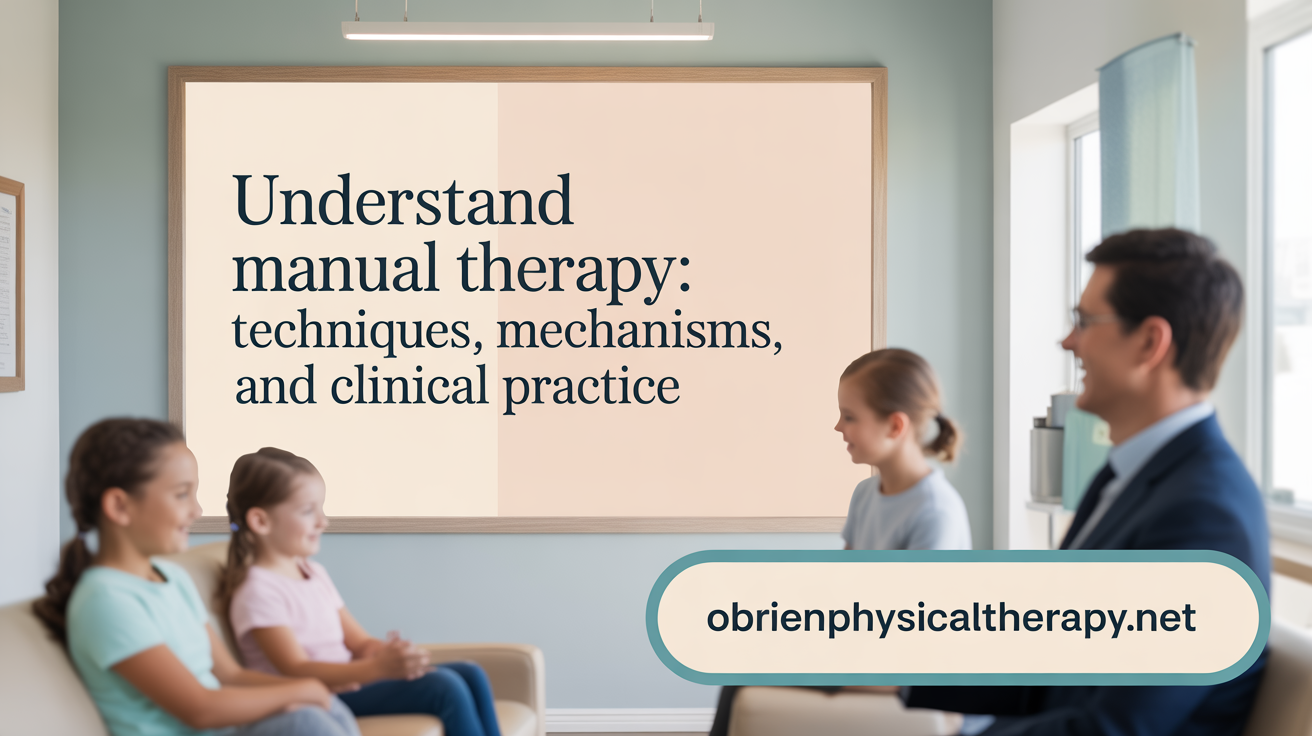
What is manual therapy in physiotherapy?
Manual therapy is a specialized hands-on approach used by physiotherapists to assess, diagnose, and treat musculoskeletal conditions. It involves skilled techniques such as joint mobilization, manipulation, massage, and soft tissue therapy. These methods aim to improve tissue flexibility, increase joint range of motion, and reduce pain and inflammation.
Manual therapy is tailored to each patient's unique condition, often incorporating clinical reasoning to select the most appropriate techniques. It is part of a comprehensive treatment plan that may include exercises, patient education, and lifestyle modifications.
Common techniques used in manual therapy
Practitioners utilize a variety of techniques, including:
- Soft tissue mobilization (massage techniques like kneading, stroking, and percussion)
- Joint mobilization and manipulation
- Muscle energy techniques
- Trigger point therapy
- Craniosacral therapy
- Manual traction
These methods target muscles, joints, nerves, and connective tissues to alleviate tension, reduce inflammation, and restore normal movement.
Neurophysiological and biomechanical mechanisms
The effects of manual therapy operate through multiple levels. Neurophysiological mechanisms include modulation of pain signals via the nervous system, relaxation of muscle spasms, and activation of pain-inhibiting pathways. It also influences biochemical processes, such as releasing endorphins.
Biomechanical mechanisms involve restoring joint mobility by physically moving stuck or restricted joints and soft tissues. This helps reduce mechanical restrictions, promote tissue healing, and improve overall bodily function.
Clinical reasoning and individualization of therapy plans
Every patient presents distinct issues such as somatic dysfunction, subluxation, or restrictions, which may be acute or chronic. A thorough assessment guides the choice and application of manual techniques.
Clinicians combine their knowledge of anatomy, physiology, and biomechanics with patient feedback to design personalized treatment strategies. This approach ensures that manual therapy effectively targets the underlying causes of movement limitations and pain.
| Aspect | Description | Purpose |
|---|---|---|
| Assessment | Physical palpation, structural exam, patient history | Identify dysfunctions or restrictions |
| Technique Selection | Based on diagnosis, patient response, and goal setting | Optimize therapeutic effects |
| Treatment Goals | Reduce pain, increase mobility, improve function, decrease muscle tension | Facilitate recovery and prevent future issues |
| Typical Outcomes | Pain relief, enhanced range of motion, quicker healing, relaxation, decreased inflammation | Improve quality of life and functional capacity |
Ultimately, manual therapy is an evidence-based intervention that, when properly individualized, can significantly improve musculoskeletal health and patient well-being.
Common Medical Conditions Treated with Manual Therapy
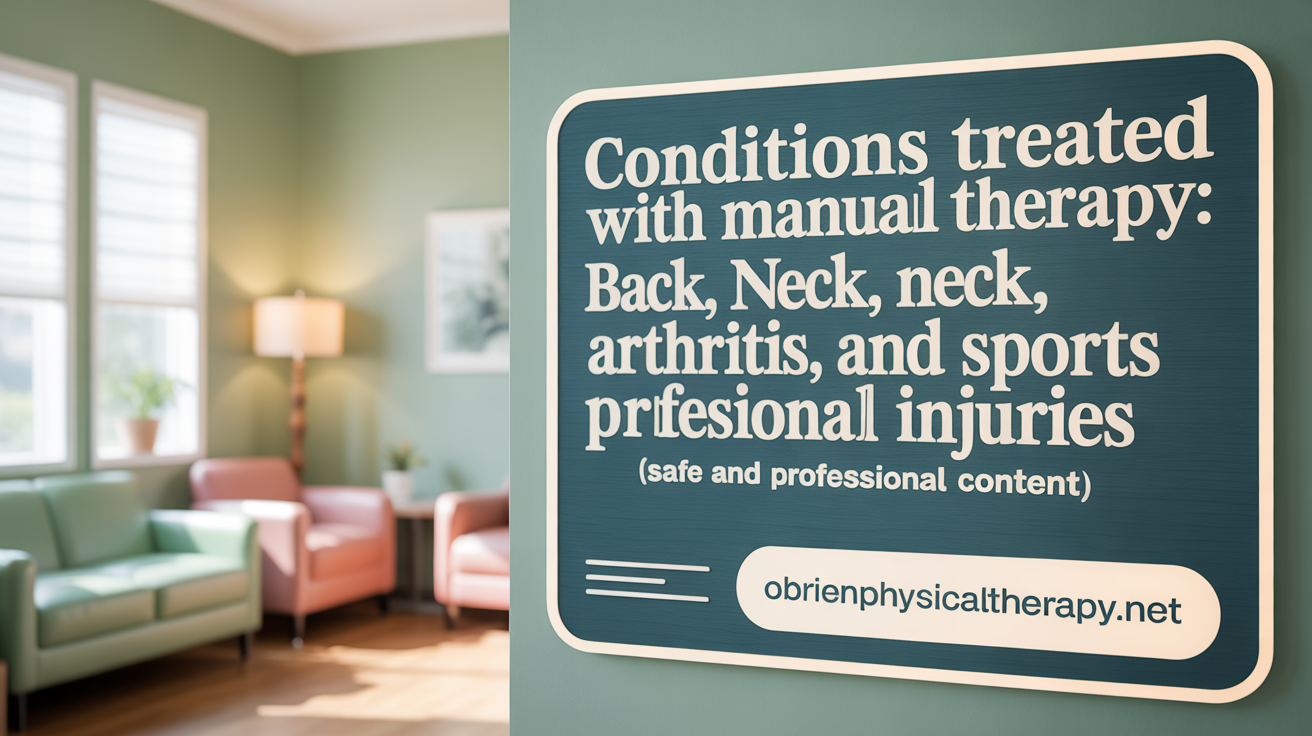
What medical conditions are commonly treated by manual therapy?
Manual therapy is frequently employed to address various musculoskeletal issues, which involve muscles, joints, and soft tissues. This hands-on approach includes techniques such as joint mobilization, massage, stretching, and manipulation, carried out by trained physical therapists or other healthcare professionals.
It is particularly effective for both acute injuries, like sudden muscle strains and joint sprains, and chronic conditions, such as persistent back pain, neck pain, or arthritis. These therapies help alleviate pain, restore movement, and support tissue healing. Additionally, manual therapy plays a vital role in post-operative recovery by improving joint flexibility and reducing muscle tension.
Besides treatment, manual therapy also acts as a preventive measure to minimize the risk of injuries, especially in athletes or individuals with repetitive strain issues. Its non-invasive nature and ability to complement other treatments make it a versatile choice for improving overall musculoskeletal health.
Specific examples of conditions treated:
| Condition | Description | Common Techniques Used | Additional Notes |
|---|---|---|---|
| Back pain | Pain originating from spinal structures or muscles | Joint mobilization, soft tissue massage, stretching | Often includes postural correction and exercises |
| Neck pain | Discomfort involving cervical spine or soft tissues | Cervical mobilization, muscle energy techniques | Helps improve cervical range and reduce stiffness |
| Arthritis | Joint inflammation causing pain and stiffness | Gentle joint mobilization, soft tissue techniques | Aims to improve joint function and reduce pain |
| Sports injuries | Sprains, strains, and overuse injuries in athletes | Soft tissue mobilization, manual stretching | Supports quicker recovery and injury prevention |
| Post-operative recovery | Rehabilitation after surgeries involving musculoskeletal tissues | Gentle mobilization, functional exercises | Facilitates scar tissue remodeling and restores mobility |
Are acute and chronic conditions treated?
Yes, manual therapy is appropriate for both sudden, acute injuries and long-standing, chronic conditions. The targeted approaches help in decreasing pain, reducing muscle tension, and enhancing functional movement.
What is the role in injury prevention and recovery?
Manual therapy contributes significantly to injury prevention by maintaining tissue flexibility and joint range. Post-injury, it accelerates recovery by restoring normal movement patterns, reducing scar tissue, and easing muscular restrictions.
By integrating manual therapy into comprehensive treatment plans, patients often experience faster healing, reduced reliance on medications, and improved overall physical function.
Manual Therapy Techniques: Tools for Targeted Healing
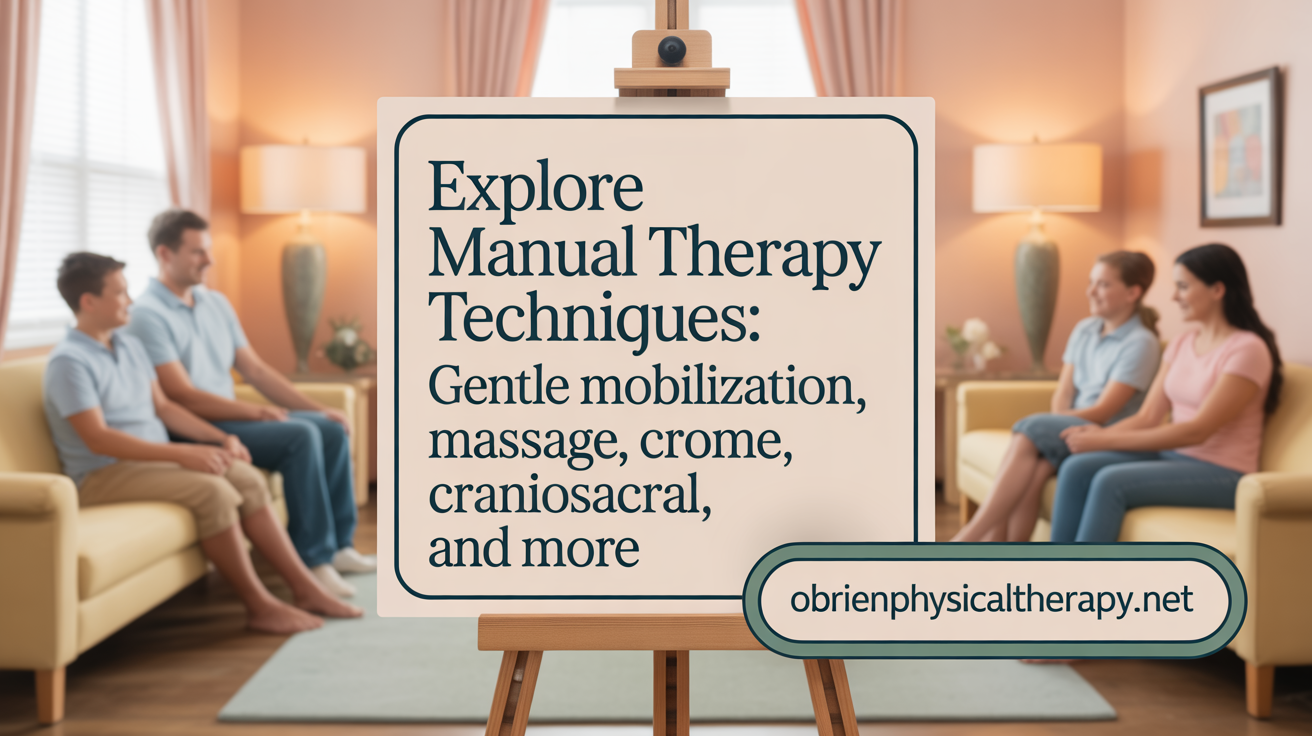
What are some common manual therapy techniques?
Manual therapy employs a variety of skilled hands-on techniques designed to address musculoskeletal issues by improving tissue function, reducing pain, and restoring movement. Among these, joint mobilization and manipulation are fundamental methods. These involve passive movements of the joints—mobilization uses gentle, measured motions to increase range of motion, while manipulation often involves quick, high-velocity thrusts aimed at relieving joint stiffness.
Soft tissue therapies form another crucial aspect of manual treatment. Techniques like massage, myofascial release, and trigger point therapy focus on muscles, fascia, and connective tissues. These approaches help alleviate tension, promote blood flow, and reduce inflammation, which are critical for pain relief and tissue healing.
Beyond these, techniques like proprioceptive neuromuscular facilitation (PNF), muscle energy methods, and strain-counterstrain techniques are used to enhance flexibility, correct imbalances, and improve motor control. PNF, for example, uses specific stretching protocols combined with muscle contractions to stretch and strengthen tissues.
Other specialized methods expand the manual therapy arsenal. Craniosacral therapy involves gentle touch to manipulate the skull and sacrum, aiming to influence cerebrospinal fluid flow and relax the nervous system. Instrument-assisted soft tissue mobilization (IASTM) employs tools to perform deep tissue techniques, breaking down scar tissue and fascial restrictions.
These diverse methods are tailored to individual needs, with the ultimate goal of decreasing pain, enhancing range of motion, and supporting the body’s healing processes through precise, practitioners’ expert intervention.
How Manual Therapy Alleviates Pain and Facilitates Rehabilitation
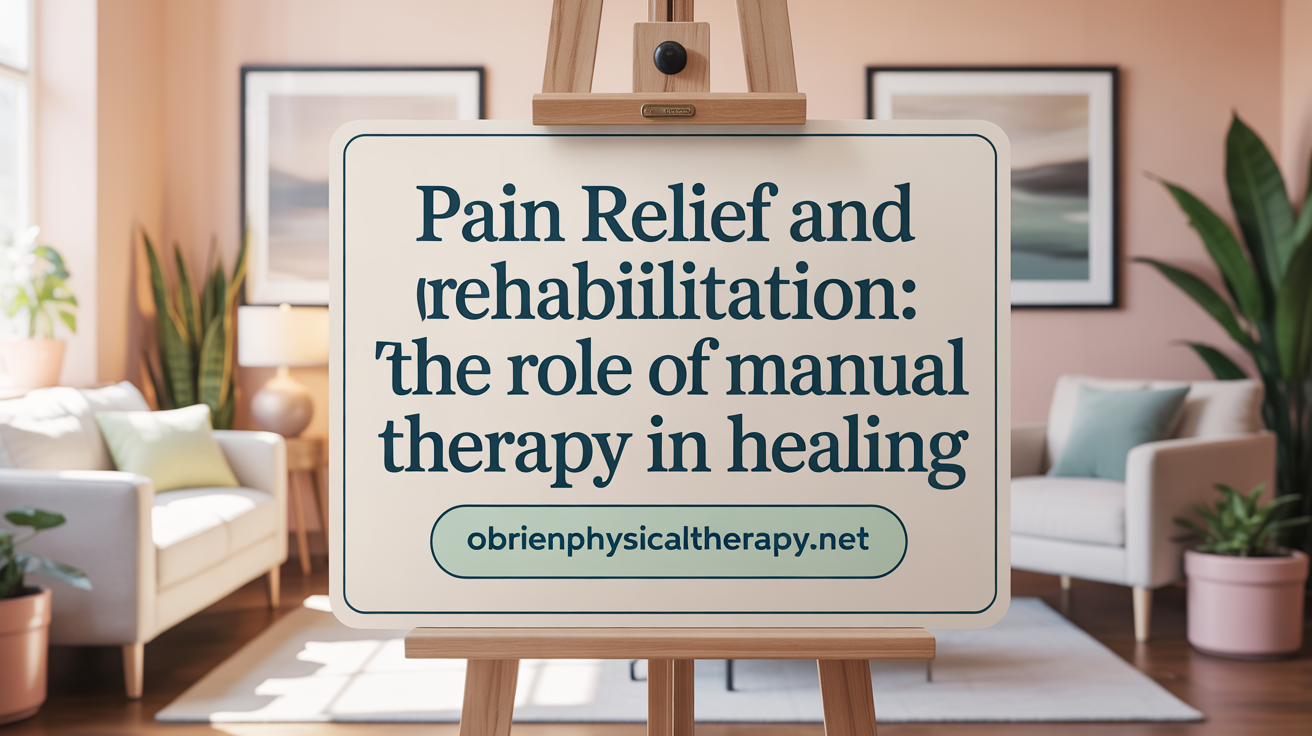
How does manual therapy work to alleviate pain and promote rehabilitation?
Manual therapy employs a blend of biomechanical and neurophysiological processes to reduce pain and support healing. The various techniques, such as joint mobilization, manipulation, and soft tissue massage, exert mechanical forces that influence both muscle and joint structures.
At the neurophysiological level, manual therapy triggers responses within the peripheral and central nervous systems. These responses include the modulation of inflammatory substances, activation of pain-inhibiting pathways, and alterations in how the brain processes pain signals. For example, gentle joint movements can stimulate mechanoreceptors that send inhibitory signals to pain pathways, diminishing the sensation of pain.
Furthermore, these therapies enhance blood flow and lymphatic drainage, which help decrease tissue swelling and inflammation. Relaxation of tense muscles and improved joint mobility reduce mechanical stress on tissues, accelerating recovery.
Psychological factors, such as positive patient expectations and emotional wellbeing, also play an important role. When patients trust the treatment and feel relief during therapy, their perception of pain can diminish via higher brain centers, reinforcing the therapeutic benefits.
Overall, manual therapy influences multiple components of the nervous and musculoskeletal systems. By decreasing pain signals, reducing inflammation, and promoting tissue healing, it creates an environment conducive to functional recovery and rehabilitation.
Benefits, Indications, and Safety Considerations in Manual Therapy
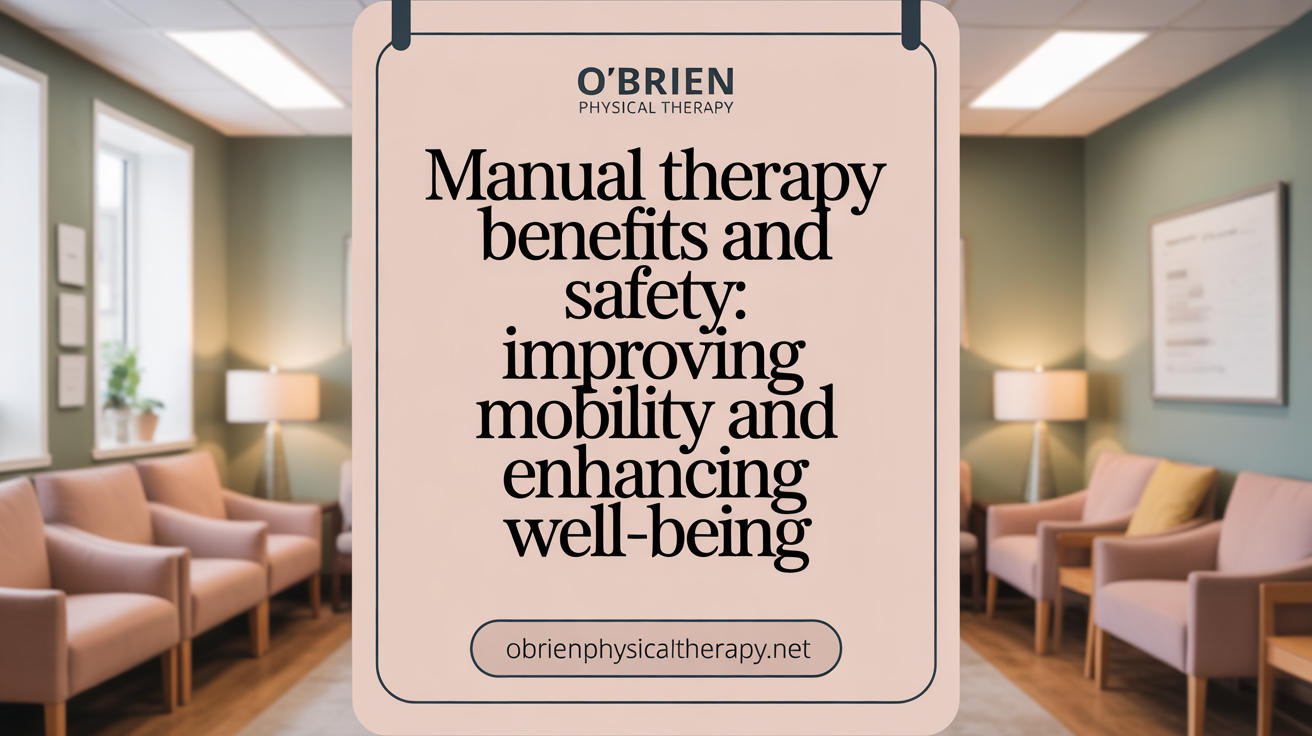
What are the benefits and outcomes of manual therapy for patients with musculoskeletal conditions?
Manual therapy provides significant relief and functional improvement for individuals suffering from musculoskeletal issues. Patients often experience reduced pain, increased joint and muscle mobility, and a better capacity to perform daily activities. The benefits arise from both mechanical effects—such as freeing joint restrictions, stretching connective tissues, and alleviating soft tissue adhesions—and neurophysiological responses, including decreased tissue inflammation, lowered pain sensitivity, and modulation of nervous system activity.
In addition, manual therapy promotes faster tissue healing, reduces muscle tension and spasms, and enhances blood and lymphatic circulation, leading to diminished soft tissue inflammation. When combined with active exercises or rehabilitation programs, manual therapy can optimize recovery, improving flexibility and motor control.
Overall, manual therapy addresses both the structural and neurophysiological aspects of pain and dysfunction, resulting in higher quality of life, improved mobility, and long-term benefits for patients with various musculoskeletal conditions.
What are the indications and contraindications of manual therapy?
Manual therapy is suited for a wide range of musculoskeletal conditions, including low back pain, neck stiffness, sports injuries like sprains and strains, osteoarthritis, and post-surgical recovery. It is particularly indicated when structural or soft tissue dysfunctions such as subluxations, restrictions, or somatic dysfunctions are detected through examination and palpation.
However, certain conditions warrant caution or exclusion from manual treatment. Contraindications include fractures, infections, tumors, severe osteoporosis, blood clots (deep venous thrombosis), and neurological deficits. Recent surgeries or systemic inflammatory diseases also pose risks. Relative contraindications include pregnancy, ongoing inflammation, systemic illnesses, and areas with hypermobility.
To ensure safety and effectiveness, manual therapy should be delivered as part of a comprehensive treatment plan, customized according to the patient's specific condition, history, and overall health status, guided by thorough clinical reasoning and evidence-based practice.
The Comprehensive Role of Manual Therapy in Musculoskeletal Health
Manual therapy serves as a versatile and effective treatment strategy for a wide range of musculoskeletal conditions, from acute injuries to chronic pain syndromes. Through skilled hands-on techniques, it not only alleviates pain but also restores mobility and promotes functional recovery by engaging complex biomechanical and neurophysiological pathways. Its integration into individualized rehabilitation plans enhances outcomes by complementing exercise and lifestyle modifications. Although further research is needed to deepen understanding of mechanisms and optimize protocols, manual therapy remains a valuable, non-invasive option for patients seeking relief from musculoskeletal discomfort and impaired function.
References
- Manual Treatments | PM&R KnowledgeNow
- Skilled Manual Therapy - Brooks Rehabilitation
- Manual Therapy Techniques | Go Grand Island Physical Therapy in ...
- Manual Therapy Overview: Definition, Techniques & Benefits
- Dignity Health | How Manual Therapy Techniques Work
- Manual Therapy | Orthopedics and Sports Medicine - Mercy Health
- Manual Therapy Ashburn VA
- Manual Therapies | The Iowa Clinic
